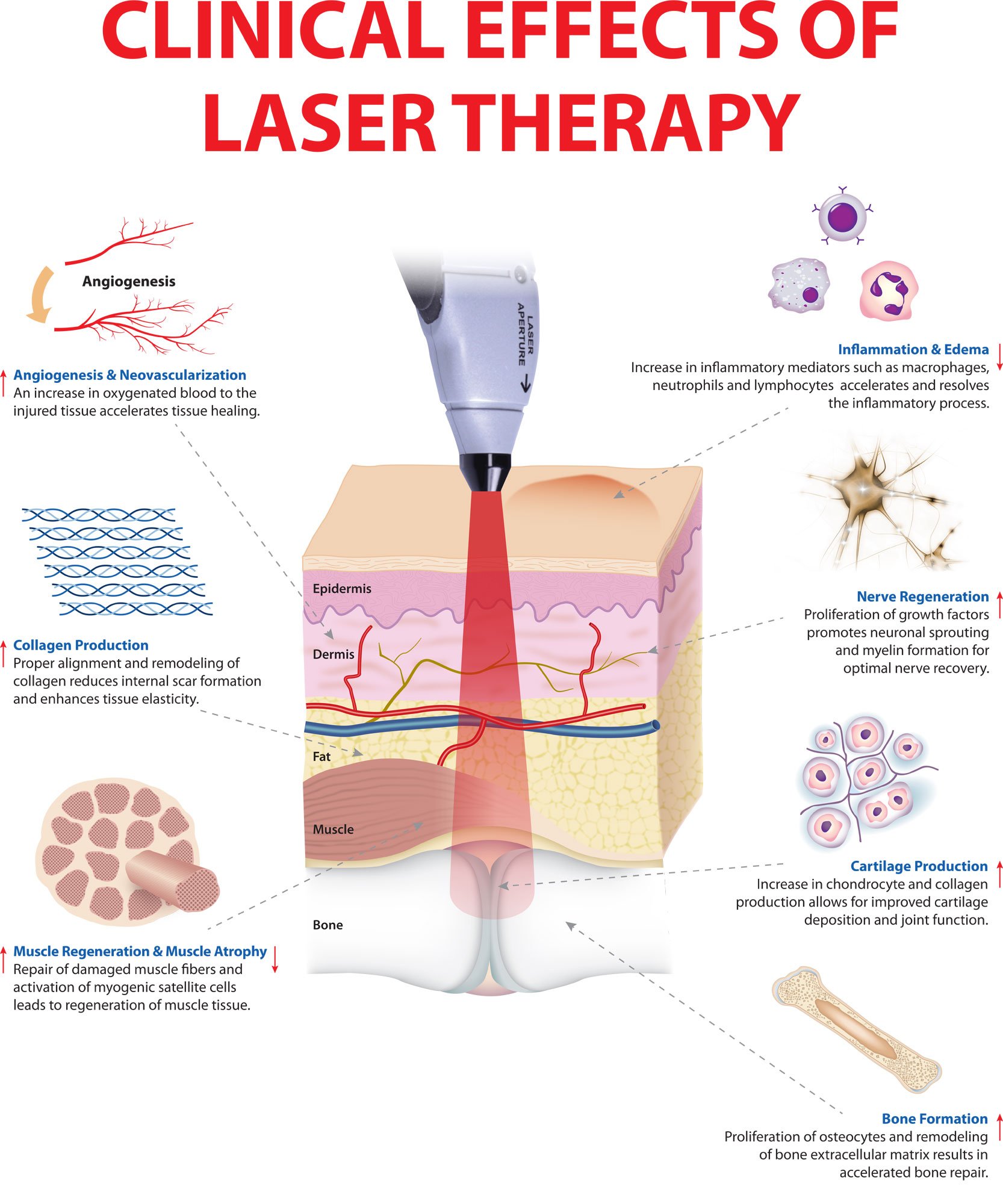The Facts About Photobiomodulation Uncovered
Wiki Article
A Biased View of Photobiomodulation
Table of ContentsThe 5-Second Trick For PhotobiomodulationAll About PhotobiomodulationThe 15-Second Trick For PhotobiomodulationPhotobiomodulation Things To Know Before You Get This
Laser treatment is a medical therapy that uses concentrated light to promote a process called. During PBM, photons go into the tissue and interact with the cytochrome c complicated within mitochondria. This communication sets off an organic waterfall of events that brings about an increase in cellular metabolic process, which can as well as speed up the recovery process.There is consensus that the application of a restorative dosage of light to impaired or inefficient cells results in a mobile reaction moderated by mitochondrial devices. Photobiomodulation. Research studies have actually shown that these changes can affect discomfort and inflammation, along with, tissue repair work
Changes in ATP, reactive oxygen species and nitric oxide adhere to light absorption by Cc, O. These effects are redox state and dosage reliant.

Little Known Questions About Photobiomodulation.
PBM tools have been removed for marketing by FDA via the Premarket Notification/510( k) process as adjunctive tools for the short-lived alleviation of pain. These clearances were based upon the presentation of professional information to support such cases (Photobiomodulation). In this therapy, a source of light is put near or in contact with the skin, permitting the light energy (photons) to pass through tissue where it connects with chromophores found in cells resulting in photophysical and photochemical modifications that lead to modifications at the molecular, cellular and tissue levels of the bodySurprisingly, recent research study suggests that light can boost performance in typical cells and cells. The potential applications of PBMT are countless and are being checked out experimentally at the standard scientific research, pre-clinical and clinical degree. The present professional uses are for the relief of discomfort and inflammation and the therapy of sporting activities injuries.

The treatment criteria and number of sessions needed for PBMT depend on location and reason. PBMT normally needs greater than one treatment for ideal discomfort relief. It may take several treatments for the results to come to be apparent. reports that it can take anywhere from 8 to 30 sessions for a therapy to be fully effective, and some patients locate it essential to undergo therapy 2 to four times weekly.
Some Known Incorrect Statements About Photobiomodulation
Therapy criteria for PBMT were originally developed making use of cells in vitro and in tiny animal models. These treatment criteria typically had a reduced irradiance and fluence and worked well for cutaneous applications. Nevertheless when clinicians started to utilize PBMT to deal with structures that were situated deeper in the body, they utilized these criteria with unfavorable outcomes.
We currently understand that these adverse researches resulted from incorrect device and therapy specifications for transcutaneous treatment of much deeper structures. Recent breakthroughs in laser therapy gadgets and even more research study right into the appropriate does have actually drastically improved the results of PBMT. For dealing with deep tissues, the wavelength of light used identifies the depth of infiltration right into a cells.
As a result, it is necessary that a clinician uses the suitable wavelength of light and parameters to deal with a condition. One wavelength and one collection of therapy specifications will not visit this web-site be reliable for all conditions. Adverse side results have actually not been reported from making use of PBMT (Photobiomodulation). Updated June 27, 2016Juanita j
Light therapy is a non-invasive therapy that functions by raising the capacity of the find out here cell to create energy (ATP) to recover the location being treated. Consequently, it can lower inflammation, swelling, and discomfort in the area. Research study around is broadening, with more in-depth research study documents linked listed below for those that wish to discover more.
The Definitive Guide for Photobiomodulation
In the very first experiment, Dr. Endre Mester, made use of cut rats and observing exactly how the laser influenced their capability to expand hair contrasted to the team that was not receiving LLLT. He located that the group of computer mice getting LLLT had the ability to expand their hair back much more promptly than the team of computer mice that didn't receive LLLT (Hoon C, et alia; 2012).This therapy is termed by doing this to set apart the difference between the lasers some professions make use of to cut (eg. in surgical treatments, or dental procedures). Low-level light treatment is painless, non-invasive treatment. It is utilized to reduce swelling, swelling, and persistent joint conditions, decrease pain and increase wound recovery of nerves and cells (Hoon C, et al; 2012).
LLLT has a biphasic action, suggesting that reduced dosages are usually seen to be extra useful than greater dosages. That being claimed, dosages higher or less than the optimal dose doesn't influence (Hoon C, et al; 2012). Therefore, it can be tough to have researches on LLLT with a lot of parameters.
Some companies incorporated the 2 (LED and laser) to give a much more all-round therapy given that lasers can pass through much deeper than LED and infrared light (Norman Doidge, The Brain's Way of Healing, 2015). Throughout treatment, the area that is being dealt with is exposed to LED light from a Bio, Flex Laser, which is click over here at 660 nm wavelength, followed by infrared light at 830-840 nm wavelength.
Report this wiki page